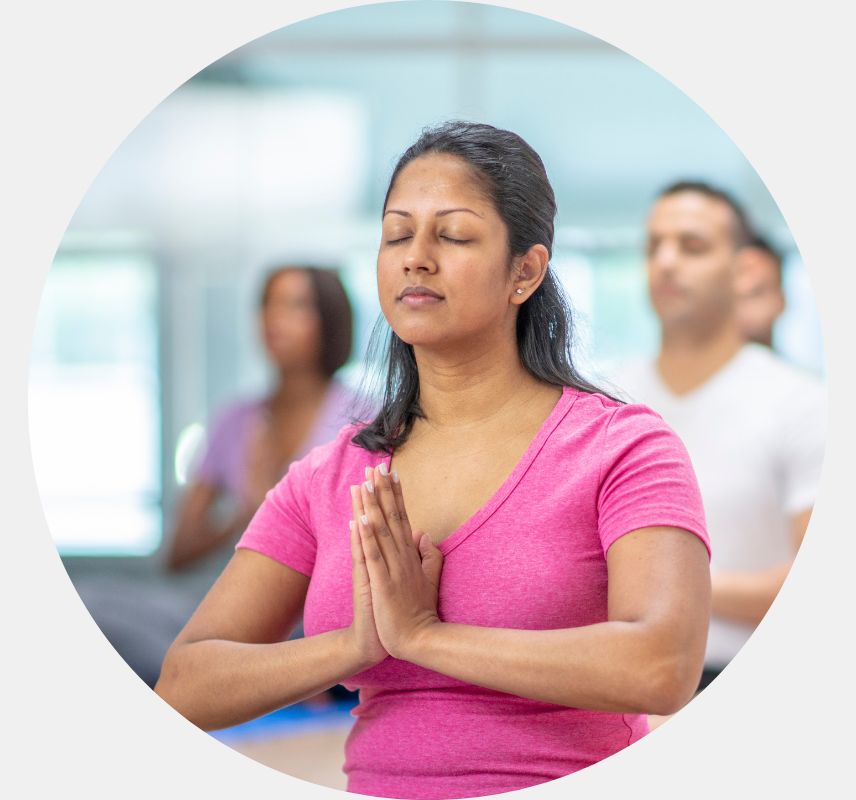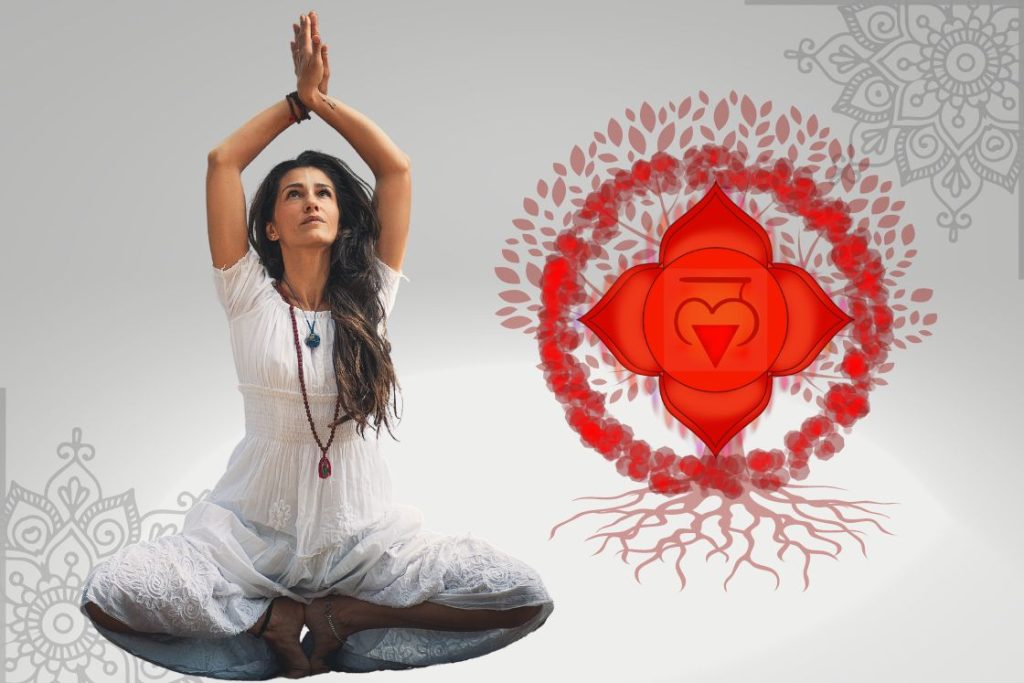
Our ability to carry out daily activities and attain tangible goals is fueled by the root chakra (Muladhara). It serves as your strong base, enabling you to handle any challenges life may bring. The root chakra, which is located at the base of the whole network and affects the basis of all of them, is crucial and linked to all seven chakras.
Setting the root chakra in balance lays the groundwork for awakening the chakras above.
Many important organs suffer from poor function when there is an energy imbalance at the root chakra. One of the most effective active methods for balancing the root chakra is through the practice of yoga asanas in conjunction with the breath.
Root chakras are specifically targeted by some yoga poses, which help cleanse them up, clear obstructions, and promote an optimal circulation of energy through them.
Understanding the Root Chakra
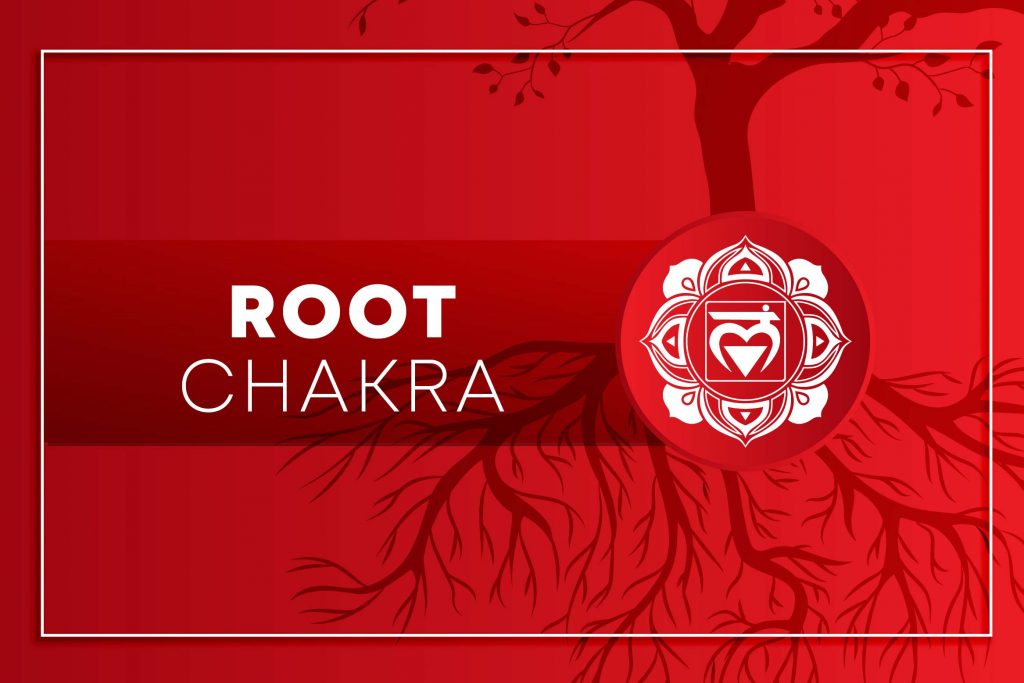
The root chakra, or Muladhara Chakra as called in Sanskrit, is an innate energy source from which all of our basic requirements, emotional demands, and awareness of safety and security (fight-flight-or-freeze response) that are necessary for us to survive and thrive on this planet are generated.
Red light emanates from the Muladhara Chakra, which is founded on the earth element.
It resides near the base of the spine, between the anus and the genitals, at the perineum. The Root Chakra’s position on the body denotes its function as a conduit between our innate energetic system and the external physical universe.
In situations of anxiety and panic, emotional fortitude can be provided by a balanced root chakra. As a result, you have a sense of solidity, stability, confidence, and strength in the world. You feel anchored and protected when these fundamental wants are satisfied, and the root chakra is in its balanced state.
On the other hand, a blocked or unbalanced Root Chakra can cause sensations of unease, worry, tension, and disorientation.
The root chakra is the connection between the person and the fundamental principles of life. When you are working to meet your survival needs, you tend to feel more content. Your vitality and sense of duty toward your job, loved ones, and friends would increase.
Both physical and emotional symptoms of a blocked Root Chakra might appear. A feeling of unfinishedness and withdrawal from everything occurs in a person when the root chakra is out of harmony. Survival mode takes over, leading to fatigue, constipation, weight gain, and other symptoms.
Some characteristics of having an unbalanced root chakra include being impatient, angry, aggressive, and greedy.
Yoga Poses for the Root Chakra
Yoga poses that open the hips and pelvis and target the lower spinal area are beneficial for balancing the root chakra. The following is a suggested short sequence of poses that can be incorporated into your yoga routine to balance your root chakra:
1. Mountain pose (Tadasana)
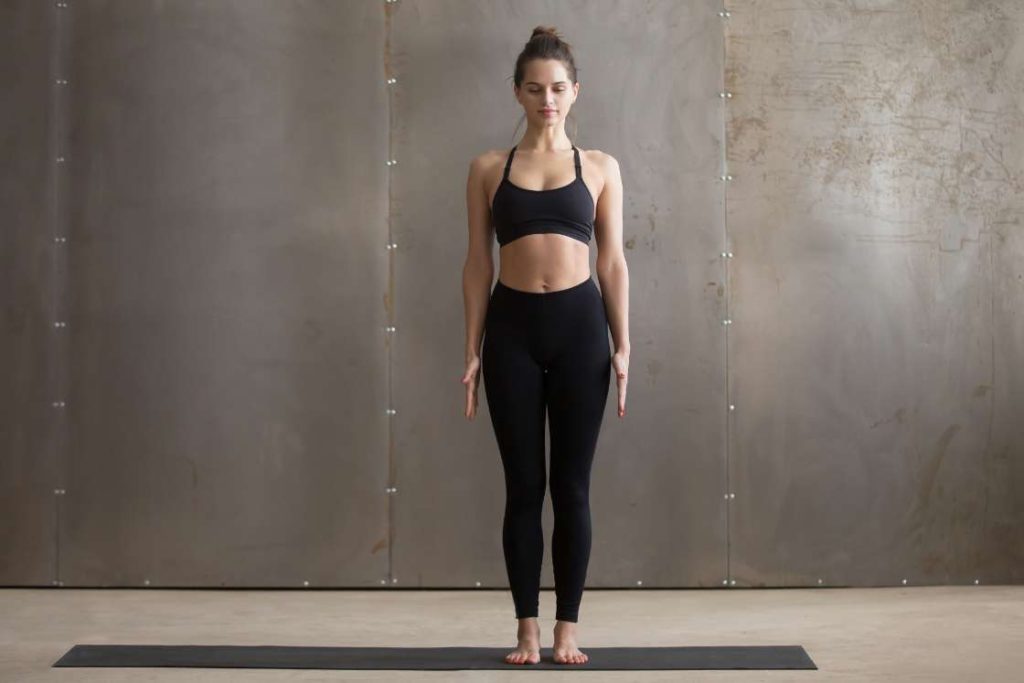
In the mountain pose, you can sense how the ground is supporting and nourishing you. You can feel more balanced and at ease throughout this position, which assists in helping you stay present-focused and grounded. You position your body evenly on both feet, which offers the solidity and grounding energies the root chakra needs to recover.
Steps to perform
- On a yoga mat, maintain a straight standing posture while keeping your feet in line with one another.
- Maintain a few inches of space between your feet so that your ankles do not touch.
- To establish a wider basis for weight distribution, spread your toes apart.
- Pull in your navel to preserve the spine’s natural curve and keep your back straight.
- Your arms may be held normally at your side. Roll your shoulder blades back and then down, keeping your shoulder away from your ears. As a result, your collarbones and chest will be opened up.
- Make sure your chin is not inclined upward or downward. Maintain a straight posture while focusing your attention on an unmoving point straight ahead.
- Maintain this pose for as long as you can.
2. Tree pose (Vrikshasana)
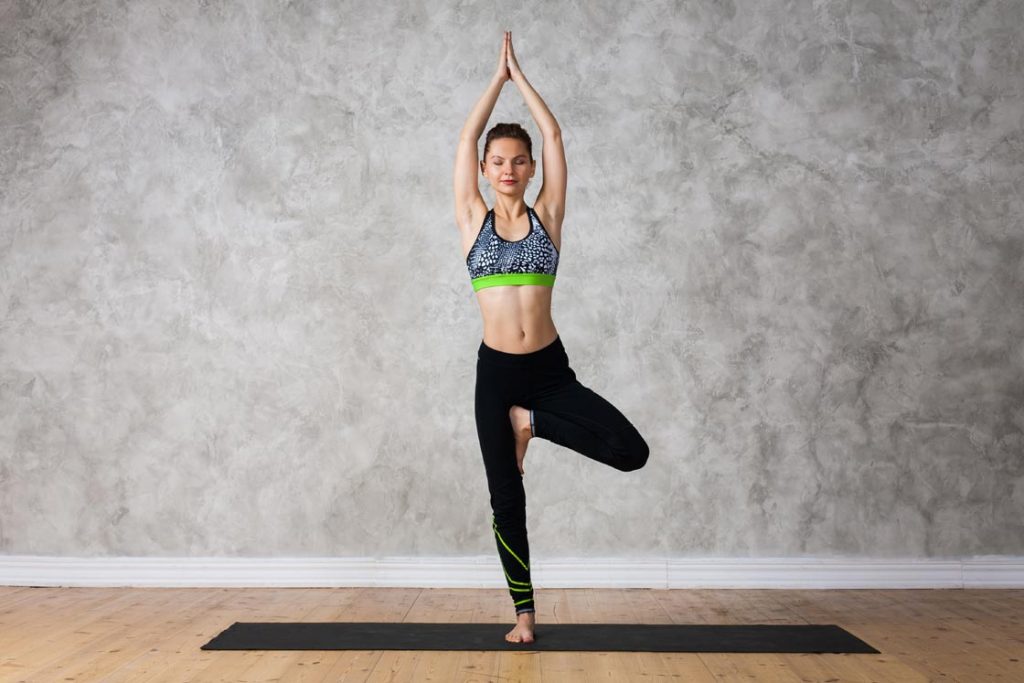
Rooting down, expanding the hips, and strengthening the lower body are all benefits of the tree pose for root chakra. The Muladhara root chakra and the earth are connected via the tree posture. With one foot firmly planted on the ground and the other stretching upward, this position aims to acquire roots like a tree.
This pose encourages energy flow from the foot to the top of the spinal column and opens the chakra at the base of the tailbone.
Steps to perform
- Start by adopting the mountain pose. Your body weight should be evenly distributed over the four corners of your feet, which should be securely planted on the mat.
- Lay some weight on your right foot and slowly lift your left leg by bending your left foot.
- The sole of your left foot should be placed on the inner of your right thigh as you rotate it to the side. Press the sole into the thigh while maintaining equal force on the sole.
- You can stretch your hands above your head and unite the palms in the Anjali Mudra.
- Maintain this position for 3-5 breaths and repeat with the right leg.
3. Warrior I (Virabhadrasana I)
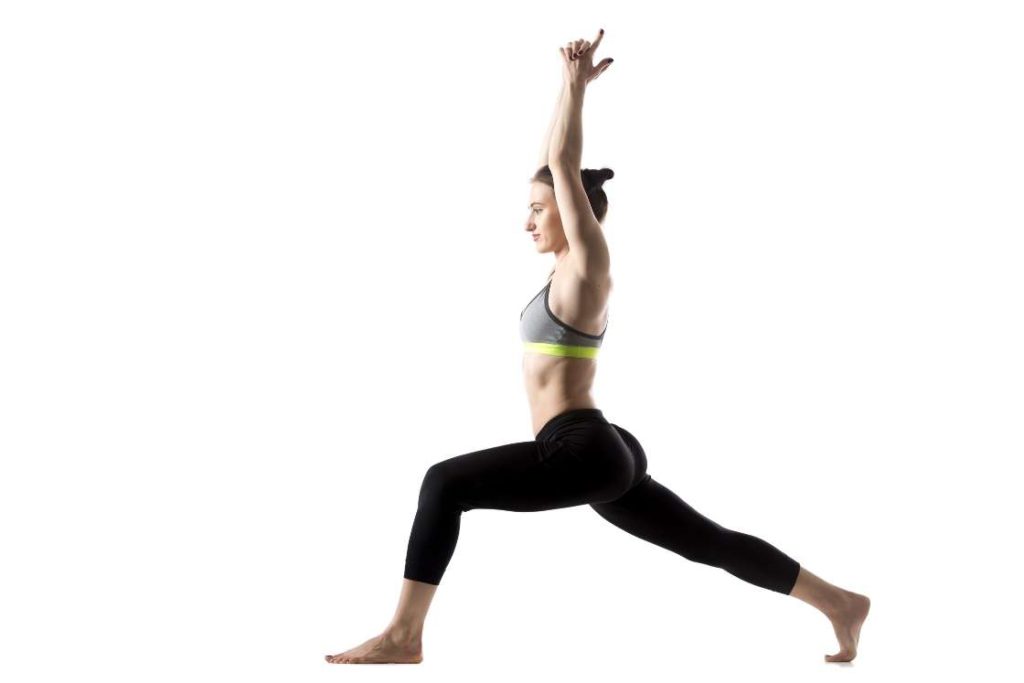
This standing yoga stance helps you develop your stability, attention, confidence, and strength. Through the use of the body’s natural energy flow, this pose empowers you to confront your apprehensions and uncertainties. You can access your inner strength and resolve when your feet have a firm footing on the ground.
You must firmly maintain your feet on the ground while performing the warrior position because this encourages the free flow of energy throughout the body.
Steps to perform
- Start by assuming the mountain pose as you face the shorter end of the mat.
- Step back with your left foot, putting both of your feet securely on the ground and bending your toes at a 45-degree angle. The left leg should be straight and your knee shouldn’t be locked.
- Your thighs should be parallel to the floor with your right knee bent to a 90-degree angle, stacking over your ankle. Ensure that the arch of your left foot is parallel to the right heel.
- Bring your arms up while opening your chest, lengthening your spine, and pulling in your abdomen.
- You can look in the front or tilt your head up to look at your fingertips if you don’t have any neck issues.
- Hold this pose for 3-5 breaths and repeat with the other leg.
4. Goddess pose (Utkata Konasana)
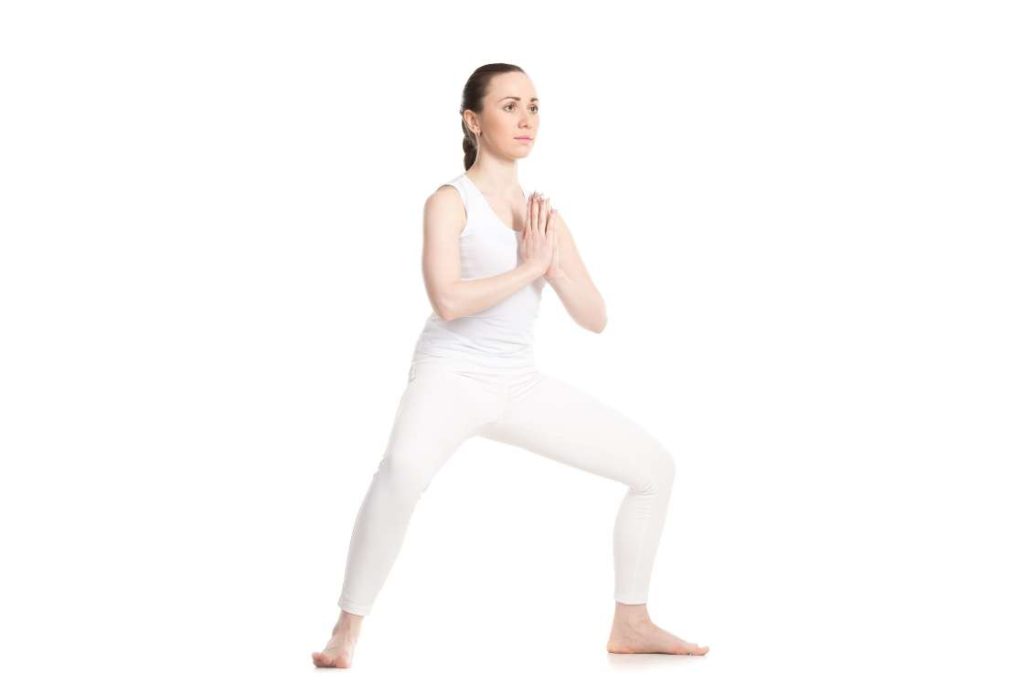
Every part of the body, particularly the lower body, is energized and warmed by the goddess pose. It is a very peaceful and centring hip opener that reduces tension, stress, and emotional tension. In addition to toning the legs, glutes, calves, ankles, and spine, it extends the inner groin, inner legs, and inner chest.
Steps to perform
- Stand in the mountain pose and spread your legs shoulder-width apart. Your toes should be turned 45 degrees outwards.
- Lower down till your thighs are parallel to the ground. Your knees should be stacked over your ankles.
- Keep your back straight by pulling in your navel and lowering your hips by engaging your core muscles.
- Spread your fingers and extend your hands above your head, bending them at the elbows. The elbows should form a 90-degree angle and the upper arm should be parallel to the thighs.
- Hold the pose for 3-5 breaths.
5. Garland Pose (Malasana)
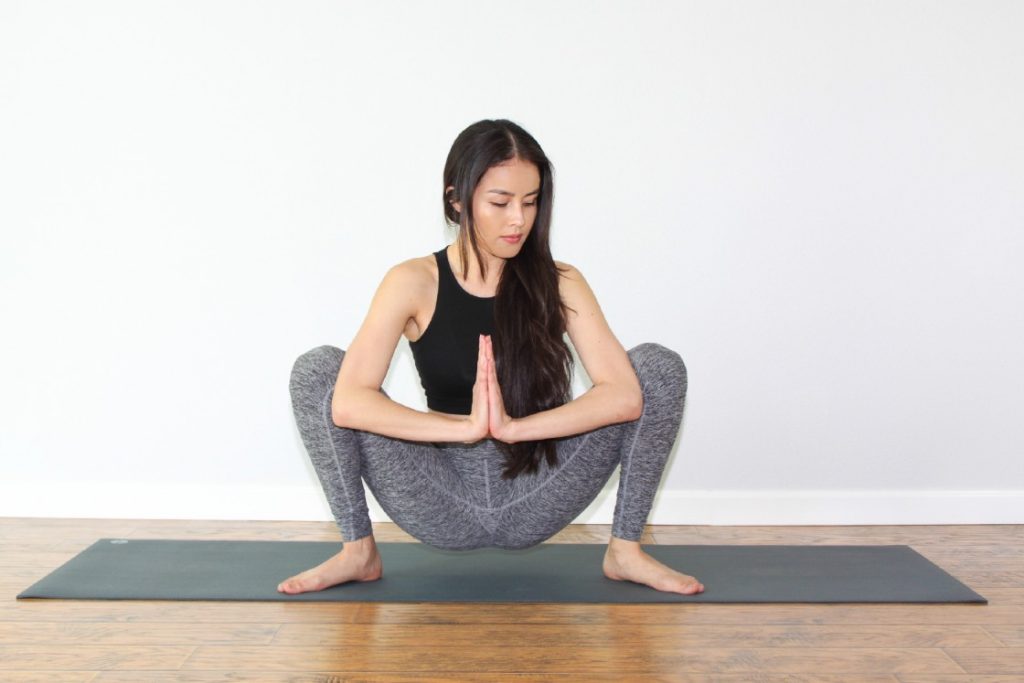
Because it improves circulation and blood flow in the pelvic region, the Garland Pose is incredibly beneficial for the root chakra. Your hips and lower spine, which are said to be hardest hit by a blocked root chakra, are strengthened by the squatting motion of this posture.
Your feet will contribute to absorbing the earth’s energy and releasing any accumulated energy back to the earth. As it gives root chakra vigor and power, practising this pose makes you feel safe in your fundamental requirements.
Steps to perform
- Stand in a Mountain Pose with your feet a little wider than hip-width apart. To maintain balance, slightly lean your feet to the side.
- Start squatting down while keeping your hands clasped in front of your chest. For further support, you can tuck a yoga block under your buttocks.
- Move your elbows to the inside of your knees to prevent the knees from turning in.
- For the sake of ease, check that your spine is straight throughout. To maintain proper alignment of your spine and head, you should also maintain your forward gaze.
- Hold this position for 3-5 breaths.
6. Child’s pose (Balasana)
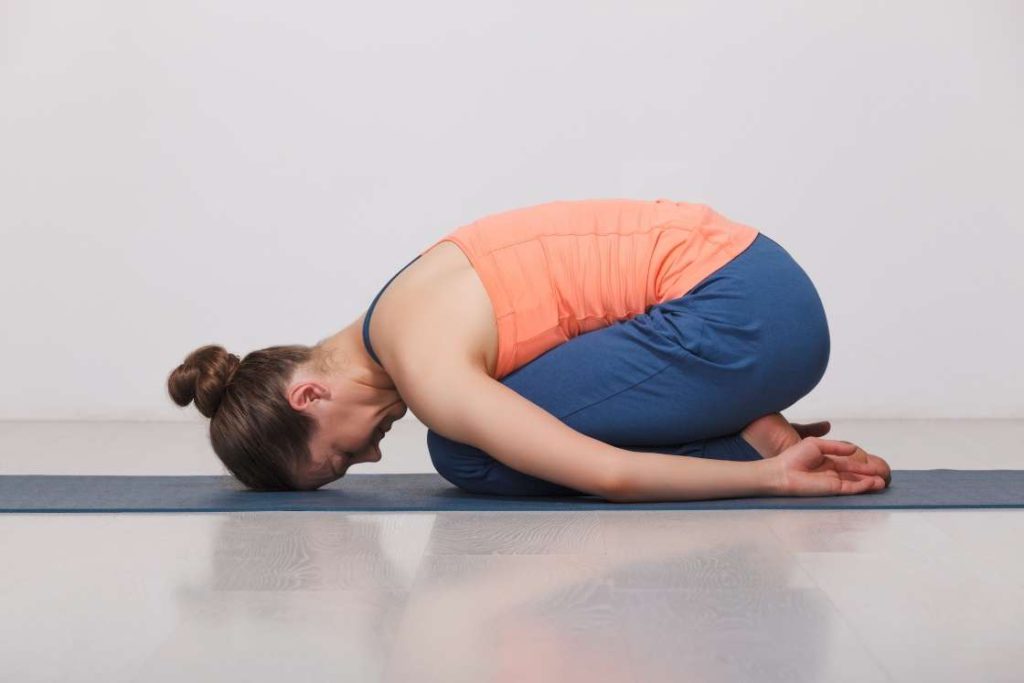
The Child’s Pose is a position that encourages whole-body relaxation. You may develop this sense of submission and support in this pose because the ground underneath you is providing all of your support.
When you need to take some time to refocus on your breathing, you can employ this grounding pose at any point during your practice.
Steps to perform
- Sit in Vajrasana (Thunderbolt Pose) on a yoga mat with your heels under your buttocks.
- The top of your feet should be flat on the floor and the big toes will be touching each other.
- Place your hands on your thighs or your knees with palms facing down.
- Start bending forward until your tummy reaches your thighs while maintaining a straight spine. Bring your forehead as close to the ground as you can or rest it on a yoga block.
- For a deeper stretch on your hips and hamstrings and bend, spread your knees apart. This will also create space to rest your upper body fully on the mat.
- As you bend forward, slide your arms as well.
- Hold this position for 3-5 breaths.
Incorporating yoga into a chakra-balancing practice
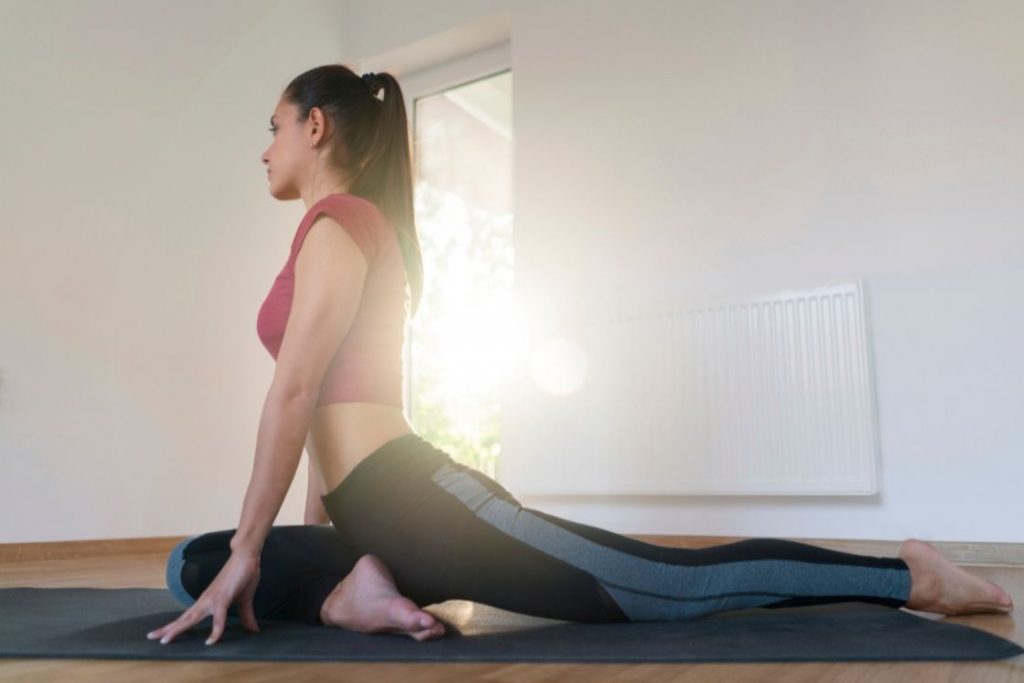
If you notice the above sequence of poses, they focus on the opening of the hip and pelvic area and emphasize being firmly planted on the ground for balancing the root chakra. Since root chakra is all about grounding, safety, security, and stability, it is obvious to include such poses in your routine.
Creating a mix of such poses will ensure that your spine is strengthened and enhance your focus and concentration while maintaining your natural posture and alignment.
Moreover, incorporating hip opening poses will also ensure a healthy function of the apana vayu, which is also governed by the root chakra.
Apart from yoga poses, there are other techniques that help in balancing the root chakra such as healing with crystals and stones, meditation, pranayama, mantra chanting, and adjusting your diet. You can combine a few of these methods with your yoga practices as well.
With crystals and stones, you can either wear them while performing yoga or place them in the area you are practicing.
With mantra chanting, you can chant, aloud or in the mind, the root chakra’s seed or bija mantra which is LAM when you are holding the poses.
Also read: 10 powerful crystals to heal the root chakra
Conclusion
It is necessary to tune into our chakras and determine which areas require attention if we are striving for optimal circulation of energy throughout the body. It’s just as crucial to stimulate chakras to generate energy as it is to remove surplus chakra energy through specific yoga positions.
The root chakra is the foundation of the entire chakra system. The proper functioning of the other 6 chakras depends heavily on the working of this chakra as it is concerned with meeting the basic survival instincts of an individual.
Imbibing yoga poses in your routine that are intended toward the root chakra location is one of the most effective ways to balance the chakra. While the above yoga poses are a suggestive list, you can also include more poses and create a sequence that suits your needs.



